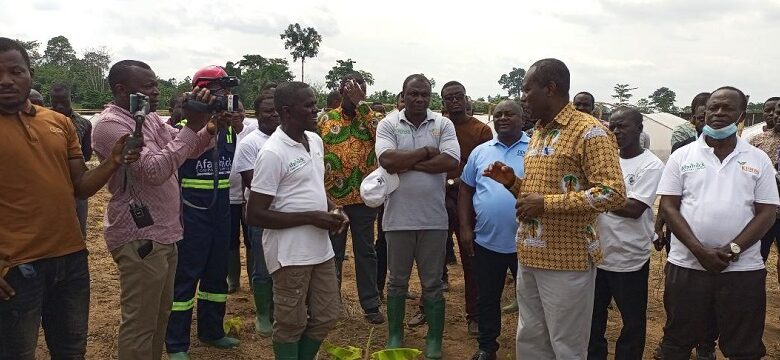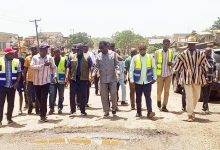
The security and tenure of the National Cocoa Rehabilitation Programme (NCRP) is assured, Chief Executive Officer (CEO) of Ghana Cocoa Board (COCOBOD), Mr Joseph Boahen Aidoo, has assured.
“Sustainability of the NRCP is assured because all the parameters have been drawn and the framework is already there; all the necessary measures are in place to make it sustainable,” Mr Aidoo gave the assurance in an interview with journalists after a recent tour of some NCRPsites in the Western North.
He noted that, farmers had appreciated efforts of the government because the packages and interventions in NCRP were unique saying “it had never, ever happened in this country, and this is revolutionary.”
“In 2017, we began to look for the key to unlock the solution to Cocoa Swollen Shoot Virus Disease (CSSVD). A government has come in and is making this remarkable feat to give hope to farmers, when they despaired. Trees were dying and we’ve revived the local economy. Today, there’s a lot of plantain being transported to Kumasi and Sekondi- Takoradi. Why do you change it?
“Farmers appreciate government because this is the first time we are planting food crops for farmers and giving them plantain suckers. It doesn’t happen, this is a caring government and also concerned about the cocoa industry being backbone of the economy”, MrAidoo argued.
He told journalist that, the NCRP came with ahuge cost as one-third of cocoa growing area was diseased, and still spreading fast to threaten the longevity and prospects of the industry in Ghana.
As part of the NCRP, COCOBOD CEO, said the government had to introduce a compensation module and other incentives, including the distribution of free plantain suckers.
He said, the land tenure system was key to the security and tenure of cocoa farmers and the industry, and that whether the cocoa trees died or not,“it is a holding for farmers and land owners.”
Mr Aidoo assured that “COCOBOD remains committed to replant diseased and over-aged cocoa trees to improve cocoa production in Ghana, particularly in the Western North.”
He said that a survey in 2017 showed that 315,000 hectares of cocoa farms had been affected by CSSVD with about 400,000 hectares of cocoa farms also moribund or over-aged, meaning that, more than 700,000 hectares of farms, one-third of Ghana’s cocoa landmass were affected, and undermining prospects in the cocoa industry.
He noted “If one third of Ghana’s cocoa land mass had not been producing, it means the cocoa industry had suffered, and so, government came in with the intervention for the Western North, the epicentre of the disease, where 200,000 hectares of farms were not growing well.
“And it’s so, because, once upon a time, Bonsu Nkwanta, Yawmatwa and Sefwi Aknotombra were the centre of cocoa production. All these areas had cocoa trees dying.”
Mr Aidoo mentioned that there was the need to plant crops like plantain for food and shades and also plant economic trees like Ofram and Odum because cocoa trees thrived under shady conditions.
FROM CLEMENT ADZEI BOYE, ENCHI







